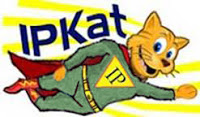 [Eleonora Rosati for IP Kat, Link (CC-BY)] As Jeremy reported on The 1709 Blog a couple of days ago, last month the Executive Committee of the Association Littéraire at Artistique Internationale (ALAI) [Victor Hugo founded it in 1878] unanimously adopted a “Report and Opinion on the making available and communication to the public in the internet environment – focus on linking techniques on the Internet”.
[Eleonora Rosati for IP Kat, Link (CC-BY)] As Jeremy reported on The 1709 Blog a couple of days ago, last month the Executive Committee of the Association Littéraire at Artistique Internationale (ALAI) [Victor Hugo founded it in 1878] unanimously adopted a “Report and Opinion on the making available and communication to the public in the internet environment – focus on linking techniques on the Internet”.
As IPKat readers will promptly recall, whether hyperlinking may be considered tantamount to making available or communication to the public is highly a controversial issue. For sure this is the case in Europe, where the Court of Justice of the European Union (CJEU) is expected to shed some light in this respect when it decides Case C-466/12 Svensson (here), Case C-279/13 C More Entertainment (here), and C-348/13 BestWater (here, but this case has been stayed pending the decision in Svensson).
The main question, as formulated by the Swedish Svea hovrätt when it referred Svensson to the CJEU, is indeed the following:
The sub-questions are then:
- Is this assessment affected if the work to which the link refers is on a website on the Internet which can be accessed by anyone without restrictions or if access is restricted in some way?
- When making this assessment, should any distinction be drawn between a case where the work, after the user has clicked on the link, is shown on another website and one where the work, after the user has clicked on the link, is shown in such a way as to give the impression that it is appearing on the same website?
Last February the European Copyright Society released its Opinion (here and here), in which it concluded that hyperlinking in general should be regarded as an activity that is not covered by Article 3(1) of the InfoSoc Directive, essentially because:
It would appear that ALAI has not really come to the same conclusions as the European Copyright Society.
According to the Executive Summary of the Executive Committee’s Opinion, the exclusive right of “making available” under the WIPO Copyright Treaty and the implementing EU legislation [the InfoSoc Directive intends the making available to the public of a work as something within the scope of the right of communication to the public] covers the offering to the public of a work for individualised streaming or downloading; in addition, where it takes place, the actual transmission of a work to members of the public also is covered, both irrespective of the technical means used for making available. In essence, what matters is that the act (i) is performed by an individual person (ii) directly or indirectly has the distinct effect of addressing the public, irrespective of the tool used by the individual, and (iii) concerns subject matter protected by copyright or related
rights.
As applied to hyperlinks, these findings lead to the following conclusions:
- The making available right covers links that enable members of the public to access specific protected material;
- The making available right does not cover links that merely refer to a source from which a work may subsequently be accessed.
The above means in particular that linking to targeted content infringes the “making available” right if
- The content is initially made available without the rightholder’s consent, or
- Technical protection measures have been circumvented or




